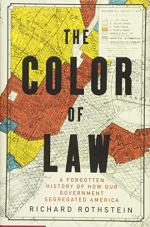
|
| Name: _________________________ | Period: ___________________ |
This test consists of 15 multiple choice questions and 5 short answer questions.
Multiple Choice Questions
1. Who protected Wilbur Gary’s house and family from the white mob?
(a) Federal troops.
(b) Local police.
(c) State police
(d) NAACP.
2. Where did the American Friends Service Committee (AFSC) find financing for an integrated development?
(a) Private backers.
(b) Metropolitan Life.
(c) California government.
(d) Federal government.
3. What order does Rothstein say the police had been given in relation to the riot at Bill Myers’ house?
(a) To protect the family’s property.
(b) To keep the protest peaceful.
(c) Not to interfere.
(d) To ban the use of alcohol.
4. Who was the leader of the riot at Bill Myers’ house?
(a) An elected official.
(b) A powerful real estate developer.
(c) A local police chief.
(d) A well-known attorney.
5. When was the first Great Migration that brought black families north?
(a) During World War II.
(b) During World War I.
(c) In the 1920s.
(d) In the 1890s.
6. In what way were African Americans still bought and sold even after the end of slavery?
(a) As serfs.
(b) As servants.
(c) As communities.
(d) As prisoners.
7. How does Rothstein suggest reforming the Section 8 program?
(a) Giving subsidies to more people.
(b) Ending the program.
(c) Limiting recipients to descendants of slaves.
(d) Giving recipients larger subsidies.
8. Who does Rothstein say spread the word that Bill Myers, an African-American veteran, had moved into the Levittown in Pennsylvania?
(a) The postman.
(b) Housewives.
(c) Local builders.
(d) Kids.
9. What should the Federal Reserve, the Federal Deposit Insurance Company (FDIC), the Office of Thrift Supervision and the Comptroller of the Currency should have done but did not do?
(a) Forced local governments to accept integrated developments.
(b) Sued towns that raised requirements for integrated developments.
(c) Forced the police to suppress move-in riots when black families moved into integrated neighborhoods.
(d) Withdrawn federal support for discriminatory organizations.
10. When does Rothstein say civil rights laws started to be passed in the U.S.?
(a) 1972.
(b) 1957.
(c) 1968.
(d) 1964.
11. What does Rothstein say happened to George Romney, Secretary of Housing and Urban Development, when he started a program called Open Communities to deny federal funds to localities that still had racially restrictive covenant and exclusionary zoning ordinances?
(a) He was transferred to another department.
(b) He was fired.
(c) Nixon forced him out of office.
(d) He retired before the program could start.
12. How does Rothstein say the IRS abetted segregation?
(a) By preserving tax-exempt status of organizations that fostered segregation.
(b) By penalizing black families for living in majority-white neighborhoods.
(c) By eliminating tax-exempt status for organizations that fought segregation.
(d) By auditing organizations that sought to build integrated housing.
13. What did local officials do to prevent the AFSC from building an integrated development?
(a) Raise the cost of the land.
(b) Add restrictions to house style and color.
(c) Deny sewer lines to the development.
(d) Threaten the builder’s life.
14. How does Rothstein say American wages changed between 1945 and 1973?
(a) Doubled.
(b) Tripled.
(c) Quadrupled.
(d) Halved.
15. What does Rothstein say was a popular tool for whites who wanted to restrict integrated neighborhoods?
(a) Denying basic services.
(b) Threatening developers’ lives.
(c) Rezoning them as industrial.
(d) Packing the courts to get favorable decisions.
Short Answer Questions
1. What does Rothstein say whites suffer from as a result of systemic discrimination?
2. What is a problem Rothstein says that African Americans suffer from as a result of poor housing conditions?
3. What does Rothstein say created the emotional time in which the Fair Housing Act was passed?
4. How have American wages changed since 1973?
5. What does Rothstein say police knew of, and ignored, in the rioters at Bill Myers’ house?
|
This section contains 598 words (approx. 2 pages at 300 words per page) |

|




